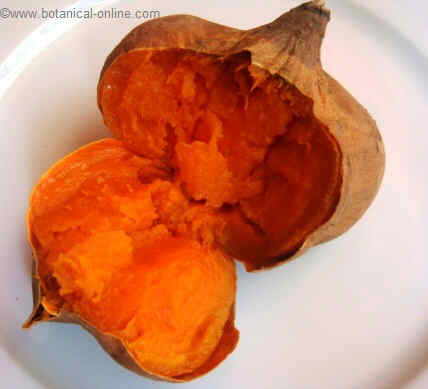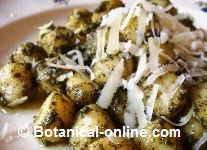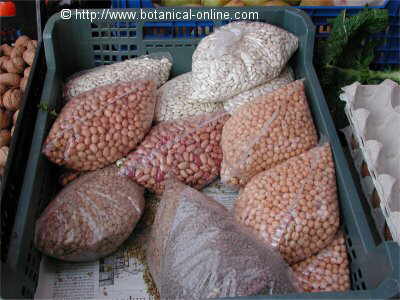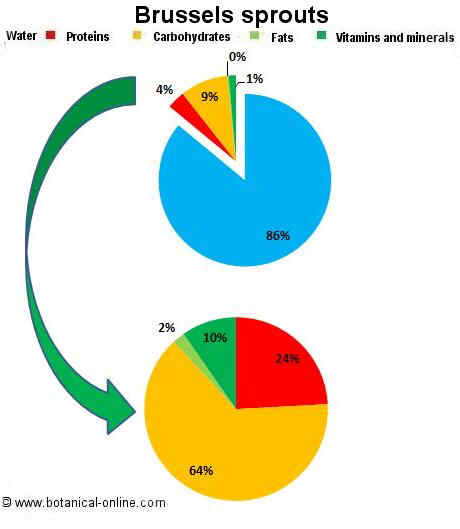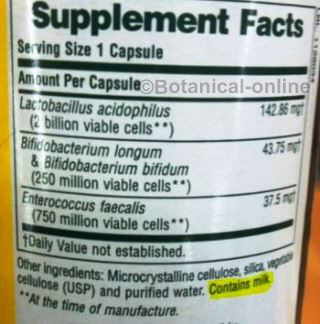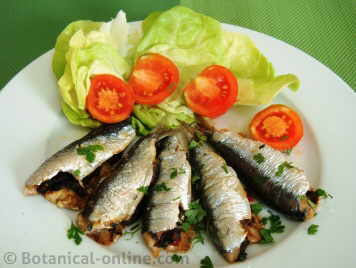Contents
- 1 Diet to gain weight
- 1.1 Healthy food to increase your weight
- 1.2 Foods to gain weight
- 1.3 Do you have to eat a lot to get fat?
- 1.4 Can you eat everything?
- 1.5 Nutrients that are needed to be consumed
- 1.6 Do thin people have to take a lot of fat or oil to gain weight?
- 1.7 Foods to improve mucosal and intestinal flora
- 1.8 Feeding guidelines for weight gain
- 1.9 Are there intestinal diseases?
- 1.10 Bowel status and nutrient absorption
- 1.11 Healthy recipes for fattening
- 1.12 Food to avoid
- 1.13 Diet food diagram for fating
- 1.14 Gain weight video
Diet to gain weight
Healthy food to increase your weight
A diet to gain weight should be healthy, enjoyable and well planned. In healthy people, gaining weight will require consuming foods rich in energy and also practice appropriate exercises aimed at increasing muscle mass.
Foods to gain weight
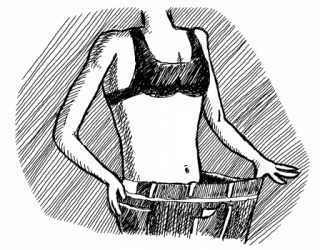
Drawing courtesy of ©Dibujosparapintar
The recommended foods to gain weight are the same ones that can be present in any healthy diet.
Those foods that are more dense in energy, such as nuts, avocado, dried or dried fruit, vinaigrettes with oil and honey, etc. should be promoted.
The inclusion of these natural and energetic foods in the meals will help to gain weight progressively and pleasantly.
It is recommended to consult a professional who advises you on what weight is healthy for you according to age and other characteristics.
Do you have to eat a lot to get fat?
As it is not recommended to lose several kilos in a short time, binge eating or large energy intakes should not be done in order to gain weight quickly.
You must acquire the habits of eating the suitable food or doing the necessary exercise to reach a healthy weight and maintain it naturally.
Can you eat everything?
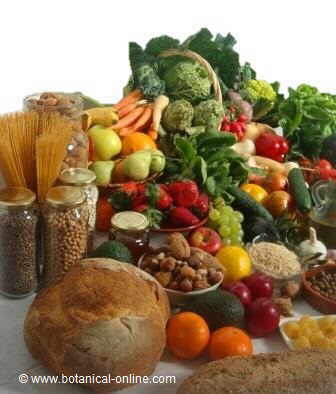
Healthy Diet Foods
Not being overweight does not mean that you can consume insane products, such as those that are very rich in added sugars, bad fats or high salty ones.
High cholesterol, hypertension, poor circulation, heart problems and diabetes are diseases that also affect thin people.
Consuming natural and healthy foods is the best way to maintain health, regardless of the current weight.
Nutrients that are needed to be consumed
People with problems to gain weight have to increase carbohydrates and vitamins of B complex . These nutrients will be found in rice, potatoes, sweet potatoes, cassava, legumes and eggs.
In non-vegetarian diets, milk, meat and fish are very good sources of B vitamins.
Do thin people have to take a lot of fat or oil to gain weight?
Fats, although they are very caloric, must be taken in balanced amounts. Excess fats, oils or fried are not recommended because they are laxative (snacks, chips, fried nuts, etc.).
This laxative effect will result in less assimilation of nutrients, less assimilated calories (poor nutrition), and poor intestinal flora (microbiota).
Foods to improve mucosal and intestinal flora

Photo of cassava, healthy food and rich in carbohydrates. Like potato or sweet potato
It is important that those who want to gain weight take food with beta-carotene, because they are antioxidants and repairers of the mucosa and digestive walls.
Rich foods include: carrots, squash, mango, loquat, broccoli, spinach, lettuce, asparagus, parsley, etc.
Prebiotic foods such as baked apple or compote (rich in pectin), prebiotic potato, boiled, cooled and reheated rice and green banana (rich in resistant starch) are also recommended.
Probiotic foods that improve intestinal flora and absorption of food include sauerkraut and bifidus yogurt.
Feeding guidelines for weight gain
The guidelines should be customized according to the schedules and the situation of each person. In general, for a progressive increase of weight are:
- Make 4 – 6 meals a day: breakfast (which can be distributed in two meals, another in the middle of the morning), lunch, snack and dinner and sometimes a meal can be adequate.
- It is preferable to drink after meals.
- Plan the diet in advance to always have the food prepared and do not skip meals.
- Between hours you can consume: cereal crackers (homemade cereal bars and nuts with honey), dried fruit (dried apricots, dates, dried figs, etc.), walnuts, cashews, almonds, bananas, coconuts, hazelnuts, cherries, mango, grapes, etc.
- Increase quantities progressively.
- Chew well, eat quietly (without swallowing food) and without distractions that can cause the same effect. Chewing increases the disintegration of the food and facilitates its absorption.
- Drink apple juice or liquefied carrot during meals. It is light and helps to improve the intestinal flora. Another option is grated carrot with lemon.
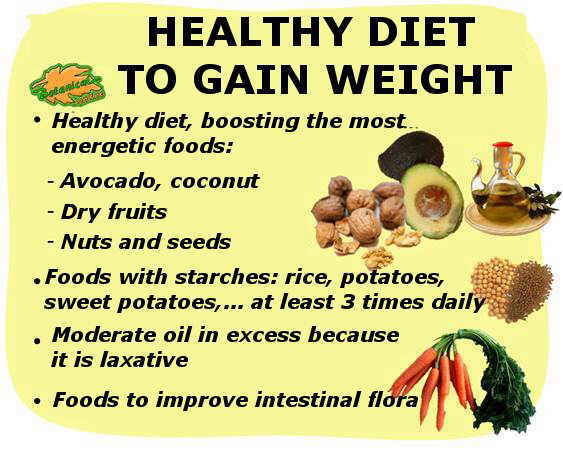
Main dietary guidelines of diet and food for fattening. Advice from a professional is recommended
Are there intestinal diseases?
In some cases, the advice of an expert physician is recommended to rule out the possibility of diseases, infections, parasites or other digestive problems that may be related to low weight.
Bowel status and nutrient absorption
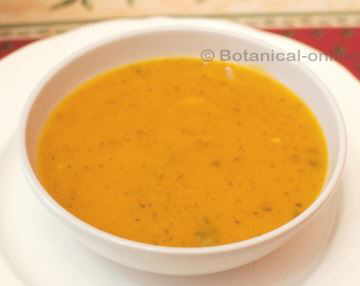 Cream of pumpkin with potato, helps to care for the intestine
Cream of pumpkin with potato, helps to care for the intestine
One of the main guidelines for people who fail to gain weight is to regain intestinal health.
A bad state of the intestine or the intestinal flora will produce the food not to be correctly absorbed:
– Inflammatory bowel disease diet
Other times, when the thin complexion of the person occurs in the whole family and the person presents well-being, it is only recommended to follow the guidelines mentioned below.
Healthy recipes for fattening
It is recommended to go to a dietitian nutritionist who provides recipes, tips and tricks of food adapted to the situation of each person, to plan well the diet, so as not to resort to junk food.
Ultraprocessed industrial products are very tasty and inexpensive, but they are very harmful to health.
For example, these are some energy recipes and easy to prepare:
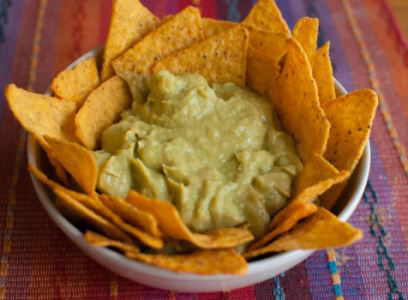
Guacamole sauce
– Guacamole sauce: This delicious sauce is full of antioxidants and benefits of vegetables. A much better choice than any mayonnaise. 100% heart healthy and recommended!
– Snacks with natural foods: Aubergine puree, hummus, beet hummus, cheese toast with aromatic herbs, etc.
– Sweets with natural foods: Cocoa truffles, nuts and honey balls, cake of cashew nuts, chocolate fruit dolls, etc.
Food to avoid
- Stop smoking or reduce the habit (nicotine eliminates hunger).
- Avoid coffee (decaffeinated or not) or reduce its consumption because it is laxative.
- Do not abuse fats because, in excess, they have a laxative effect. Use olive oil in the usual doses, but restrict excess fat such as fried, fried nuts, chips, pastries, etc.
Diet food diagram for fating
Breakfast: The traditional breakfast consists of a dairy (or substitute) food, a food rich in starches (tuber, bread,…) and a fruit. This generic guideline can be adapted to many types of diets. Some examples:
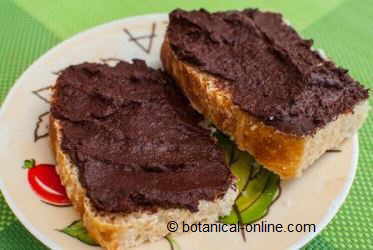
Photo of toasts with homemade cacao cream
- Glass of milk (or vegetable drink with calcium), sandwich and a fruit. Add some dried fruit.
- Infusion, 2 natural yogurts with muesli and banana
- Milk (or vegetable drink with calcium), bread with homemade chocolate cream and fruit.
- Milk (or vegetable drink with calcium), bread with cream of homemade carob and fruit.
- Milk (or vegetable drink with calcium), bread with guacamole and fruit.
- Infusion, cheese sandwich and banana
- Roasted chestnuts, yogurt with nuts and a fruit
- Roasted sweat potato, Kefir, a handful of nuts and a fruit

Photo of roasted sweet potato
Mid morning: Choose TWO from the following options:
- A fruit such as banana, mango,..
- Sandwich with guacamole, homemade custard,..
- Nuts, almonds, hazelnuts, raisins, dried apricots, fig
- Homemade bar of cereals or nuts with honey
- Yogurt, fruit and oatmeal shake
- Homemade oatmeal cookies
- Roasted chestnuts
- Roasted sweet potato
Lunch
- 1st dish : rice, pasta, peas, chickpeas, lentils, potatoes, corn. Cook it with: dried pesto-type sauces (cashews are the most recommended nuts, rich in carbohydrates), tomato sauce with “chopped” nuts, etc.
- 2º dish : tofu, meat, fish or egg + salad (Add some: avocado, corn, fruit, crab,…)
- 3rd dish : fruit dessert (pineapple, papaya and kiwi are digestive), natural yogurt, yogurt with fruit, etc.
- Accompaniment: roast potatoes or bread
Snack: Same as mid-morning.
Dinner: Same as at lunch, preferable vegetable dish, easy to digest. Dessert of fruit or yogurt (what has not been taken in the noon)
- Examples of first courses with vegetables rich in calories (hypercaloric): Potatoes with boiled peas, cream of vegetables (with potato and cheese), pasta with tomato sauce, Brussels sprouts with bechamel sauce, rice pudding, etc.
Gain weight video
![]() More information on appetite and its natural treatment
More information on appetite and its natural treatment

